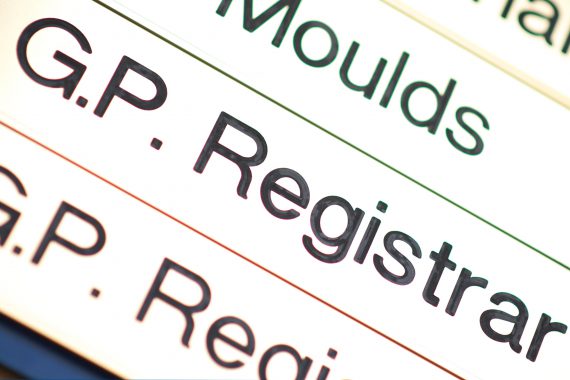Revealed: GP training targets in doubt as applications tumble 5%

Exclusive Applications for 2016 GP training have slumped by 5% on last year spelling disaster for the Government target of delivering 5,000 more GPs by 2020.
Leaked figures – obtained by Pulse – reveal that despite a national advertising campaign aimed at promoting general practice as a career, the proportion of doctors applying for GP specialty training starting in August 2016 has reached a record low.
Medical specialty training figures revealed by Pulse show just 4,863 applications for 3,790 GP training posts across the UK for August 2016.
How education leaders are reacting to Pulse’s exclusive on GP training figures
Last year, the first application round of GP training received 5,112 applications for 3,609 places but this only delivered 2,769 trainees in 2015 despite three application rounds and changes to allow failed applicants to reapply.
In England, Health Education England has the Government-mandated target to recruit 3,250 GP trainees a year by August 2016, a major part of the effort to get 5,000 more GPs by 2020, as promised by the Conservative Party before the general election last year.
It takes three years to train a GP and this latest cohort will be one of the last to be fully trained before 2020.
It is also a double setback as this year Health Education England and the RCGP launched a major publicity drive to encourage graduates to choose general practice training.
The RCGP produced a video saying that there ‘was never a better time to become a GP’ and HEE produced a series of videos showing GPs signing forms for sky-diving and helping patients run marathons and manage their asthma.
GP leaders told Pulse that the figures showed ‘fundamental issues’ with the Government’s recruitment strategy that neglected the root cause of making general practice an attractive career.
How bad are the figures?

GP Registrar sign – Practice sign – 330×170 – online
Overall, applications for medical specialist training are down 3%, compared with 2015, perhaps a reflection of the row over the junior doctor contract. But the real shocker is the large decrease in applications for GP training.
The places available for GP training (round one) have increased by 5% to 3,790 in 2016, but applications are down the same amount compared with 2015. There were just 4863 in 2016, compared with 5,112 at the same stage in 2015.
This is a 5% decrease and comes after a major publicity drive to promote general practice. And it compares with large increases in applications for other specialities. Applications to surgical training increased by 7%, psychiatry by 5% and ophthalmology is up 17%.
Deputy GPC chair Dr Richard Vautrey said: ’There are fundamental issues that the whole system has to address in terms of reaching out to medical students and young doctors around general practice. The only way to really tackle that is to address the root cause, which is the workload pressures and lack of funding in general practice itself.
’Young medical students are bright men and women and can see the evidence for themselves about the pressures in general practice, particularly during their GP placement in training.’
Just yesterday, health minister Ben Gummer congratulated HEE on their performance towards the 5,000 GPs target. He said: ’Health Education England is so far meeting its targets in filling those training places. I congratulate its chief executive, Professor Ian Cumming, on the work he has done in that regard.’
A Health Education England spokesperson said: ’The story does not paint an accurate picture as this is very much an on-going recruitment process that still has months left to run.
’So this is merely speculation as application numbers do not mean fill rate figures. We have shown that we can influence figures with direct action such as the round three figures from last year.’
Dr Maureen Baker, chair of the RCGP, said: ’If these figures are correct, it is important not to be discouraged or write off efforts to increase recruitment as unsuccessful. By the end of recruitment last year, the number of places filled had risen overall by nearly 100, so these should very much be seen as interim figures.’
Pulse October survey
Take our July 2025 survey to potentially win £1.000 worth of tokens










